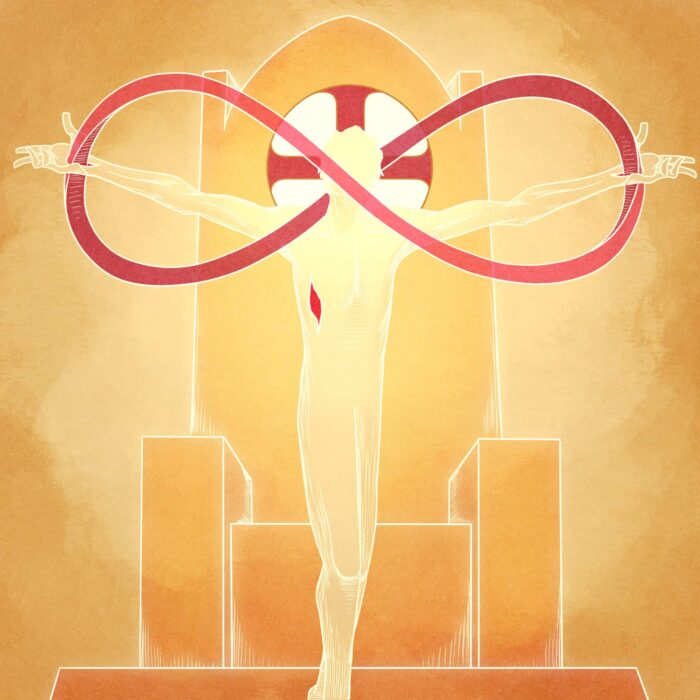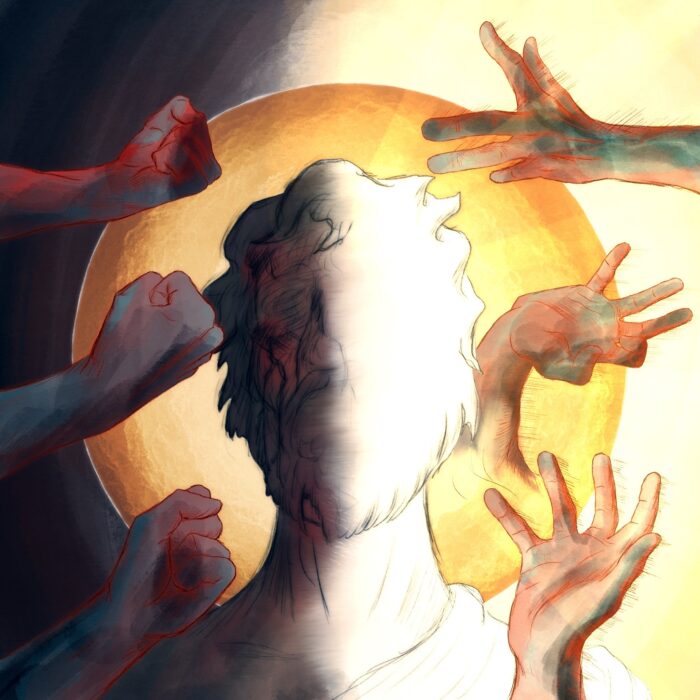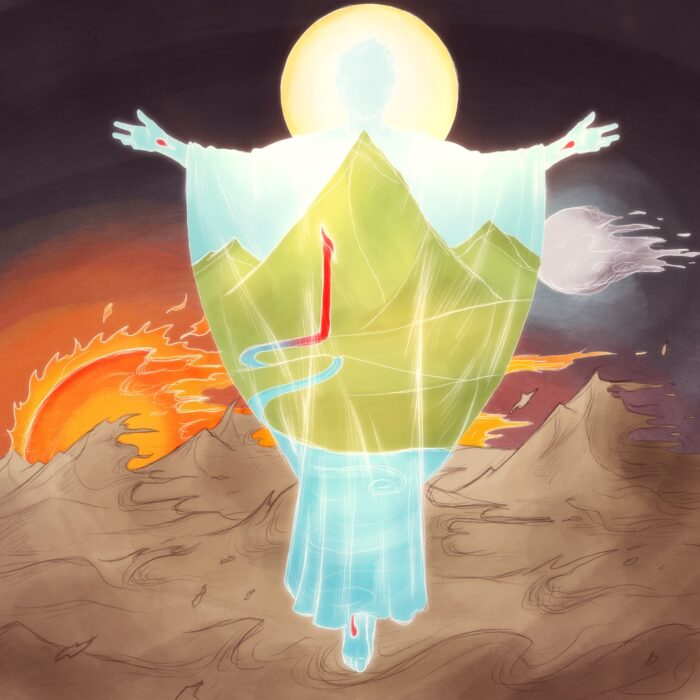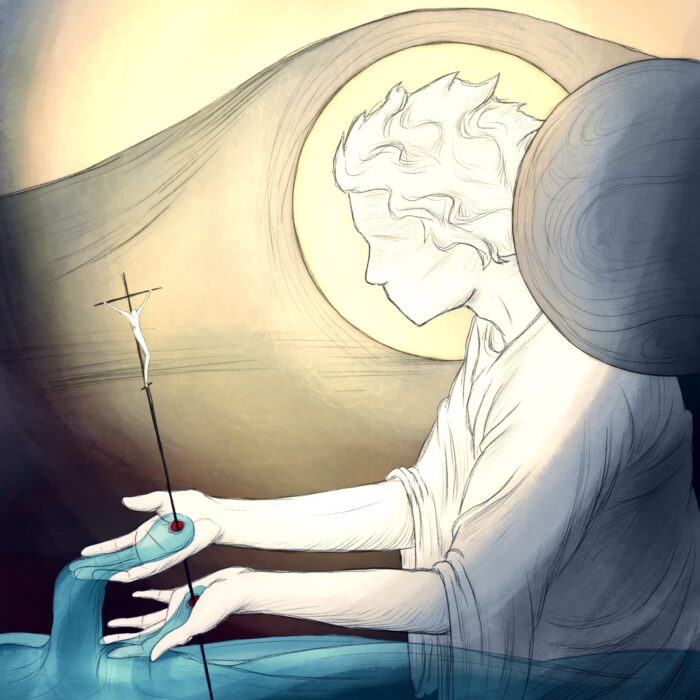Isaiah 57:15, “For thus says the One who is high and lifted up… ‘I dwell in the high and holy place, and also with him who is of a contrite and lowly spirit, to revive the spirit of the lowly, and to revive the heart of the contrite.’”
The Hebrew translated “contrite” is דכא, or “crushed.” I mention this because the same word is used only a few chapters earlier in 53:5 to refer to the Suffering Servant who is “crushed (דכא) for our iniquities.” Significantly, the Servant—like YHWH here in 57:15—is also said to be “high and lifted up” (52:13). The combination of these three words: crushed, high, and lifted up, forms a strong interpretive link between these passages, calling us to read them in light of each other.
The one who is high and lifted up and who inhabits eternity is in some way linked to the Servant who will be high and lifted up….and the one who also dwells with the crushed in spirit in order to revive them is to be understood in light of the Servant who is crushed for the inquiries of his people, and vis versa. But what can we say about this connection? I think it is John who saw the link between the two and who realized that the crucified and risen Jesus was Himself the answer…
John—unique among NT writers who usually prefer a sequential, suffering-into-glory presentation—John understands Jesus’ crucifixion to be His elevation in glory. It is not that He is crucified and then glorified, but that His crucifixion is itself His glorification; His being lifted up on the cross is itself His being lifted up in glory. I think John developed this understanding through musing on connected passages just like the ones noted above. [[Continued in Comments]]
In John’s reading—which is also the Spirit’s reading—we see that the One who is high and lifted up and who inhabits eternity IS the Suffering Servant who is high and lifted up in His suffering on the cross, and conversely, that when the Servant is lifted on the cross, then He is recognized as the exalted God who dwells in eternity (John 8:28). The high-ness and lifted-up-ness of the eternal God is the high-ness and lifted-up-ness of the cross….this is the sort of exaltation, this is the sort of glory that belongs to the eternal God; namely, the exaltation and glory of His self-outpouring love.
And because the the One who inhabits eternity is this one (namely, the one we meet lifted up on the cross), His exaltation and eternality are by no means at odds with His intimate and immediate nearness to the lowly and the crushed. Indeed, to be “crushed” in the midst of the lowly (53:5) is an expression of His exalted glory (52:13). Yes, ultimately that “high and holy place” wherein the high and lifted up God of eternity dwells IS the height of the cross on Calvary, where the Son obediently gives Himself in love for the lowly and the crushed…this is the high and holy glory that the Son had in the presence of the Father before the foundation of the world (John 17:5).
From connections like this it is only a small step to recognize that YHWH “high and lifted up” on the throne of Isaiah 6 is, in fact, a vision of the Suffering Servant “high and lifted up” in the exaltation of his suffering: the throne of Heaven is the cross of Calvary, an insight that I believe John declares iconographically in the image of the slain and risen Lamb standing in the midst of God’s throne as the visible expression of the unseen God.




